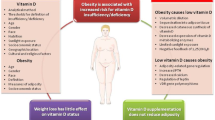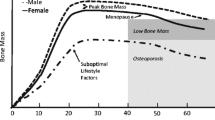Abstract
Obesity is a severe health problem in children, afflicting several organ systems including bone. However, the role of obesity on bone homeostasis and bone cell function in children has not been studied in detail. Here we used young mice fed a high-fat diet (HFD) to model childhood obesity and investigate the effect of HFD on the phenotype of cells within the bone marrow environment. Five-week-old male mice were fed a HFD for 3, 6, and 12 weeks. Decreased bone volume was detected after 3 weeks of HFD treatment. After 6 and 12 weeks, HFD-exposed mice had less bone mass and increased osteoclast numbers. Bone marrow cells, but not spleen cells, from HFD-fed mice had increased osteoclast precursor frequency, elevated osteoclast formation, and bone resorption activity, as well as increased expression of osteoclastogenic regulators including RANKL, TNF, and PPAR-gamma. Bone formation rate and osteoblast and adipocyte numbers were also increased in HFD-fed mice. Isolated bone marrow cells also had a corresponding elevation in the expression of positive regulators of osteoblast and adipocyte differentiation. Our findings indicate that in juvenile mice, HFD-induced bone loss is mainly due to increased osteoclast bone resorption by affecting the bone marrow microenvironment. Thus, targeting osteoclast formation may present a new therapeutic approach for bone complications in obese children.






Similar content being viewed by others
References
Dimitri P, Bishop N, Walsh JS, Eastell R (2012) Obesity is a risk factor for fracture in children but is protective against fracture in adults: a paradox. Bone 50:457–466
Looker AC, Flegal KM, Melton LJ 3rd (2007) Impact of increased overweight on the projected prevalence of osteoporosis in older women. Osteoporos Int 18:307–313
Albala C, Yanez M, Devoto E, Sostin C, Zeballos L, Santos JL (1996) Obesity as a protective factor for postmenopausal osteoporosis. Int J Obes Relat Metab Disord 20:1027–1032
Cao JJ, Gregoire BR, Gao H (2009) High-fat diet decreases cancellous bone mass but has no effect on cortical bone mass in the tibia in mice. Bone 44:1097–1104
Rana AR, Michalsky MP, Teich S, Groner JI, Caniano DA, Schuster DP (2009) Childhood obesity: a risk factor for injuries observed at a level-1 trauma center. J Pediatr Surg 44:1601–1605
Li KC, Zernicke RF, Barnard RJ, Li AF (1990) Effects of a high fat-sucrose diet on cortical bone morphology and biomechanics. Calcif Tissue Int 47:308–313
Lorincz C, Reimer RA, Boyd SK, Zernicke RF (2010) High-fat, sucrose diet impairs geometrical and mechanical properties of cortical bone in mice. British J Nutr 103:1302–1308
Cao JJ (2011) Effects of obesity on bone metabolism. J Orthop Surg Res 6:30
Cao JJ, Sun L, Gao H (2010) Diet-induced obesity alters bone remodeling leading to decreased femoral trabecular bone mass in mice. Ann N Y Acad Sci 1192:292–297
Halade GV, El Jamali A, Williams PJ, Fajardo RJ, Fernandes G (2011) Obesity-mediated inflammatory microenvironment stimulates osteoclastogenesis and bone loss in mice. Exp Gerontol 46:43–52
Shoelson SE, Herrero L, Naaz A (2007) Obesity, inflammation, and insulin resistance. Gastroenterology 132:2169–2180
Le P, Kawai M, Bornstein S, DeMambro VE, Horowitz MC, Rosen CJ (2012) A high-fat diet induces bone loss in mice lacking the Alox5 gene. Endocrinology 153:6–16
Xing L (2009) Regulation of osteoclast precursors in inflammatory bone loss. Curr Opin Investig Drugs 10:1195–1203
Yao Z, Li P, Zhang Q, Schwarz EM, Keng P, Arbini A, Boyce BF, Xing L (2006) Tumor necrosis factor-alpha increases circulating osteoclast precursor numbers by promoting their proliferation and differentiation in the bone marrow through up-regulation of c-Fms expression. J Biol Chem 281:11846–11855
Muguruma Y, Lee MY (1998) Isolation and characterization of murine clonogenic osteoclast progenitors by cell surface phenotype analysis. Blood 91:1272–1279
Ritchlin CT, Haas-Smith SA, Li P, Hicks DG, Schwarz EM (2003) Mechanisms of TNF-alpha- and RANKL-mediated osteoclastogenesis and bone resorption in psoriatic arthritis. J Clin Invest 111:821–831
Nose M, Yamazaki H, Hagino H, Morio Y, Hayashi S, Teshima R (2009) Comparison of osteoclast precursors in peripheral blood mononuclear cells from rheumatoid arthritis and osteoporosis patients. J Bone Miner Metab 27:57–65
Dimitri P, Wales JK, Bishop N (2010) Fat and bone in children: differential effects of obesity on bone size and mass according to fracture history. J Bone Miner Res 25:527–536
David MA, Jones KH, Inzana JA, Zuscik MJ, Awad HA, Mooney RA (2014) Tendon repair is compromised in a high fat diet-induced mouse model of obesity and type 2 diabetes. PLoS One 9:e91234
Brown ML, Yukata K, Farnsworth CW, Chen DG, Awad H, Hilton MJ, O’Keefe RJ, Xing L, Mooney RA, Zuscik MJ (2014) Delayed fracture healing and increased callus adiposity in a C57BL/6 J murine model of obesity-associated type 2 diabetes mellitus. PLoS One 9:e99656
Kaneki H, Guo R, Chen D, Yao Z, Schwarz EM, Zhang YE, Boyce BF, Xing L (2006) Tumor necrosis factor promotes Runx2 degradation through up-regulation of Smurf1 and Smurf2 in osteoblasts. J Biol Chem 281:4326–4333
Guo R, Yamashita M, Zhang Q, Zhou Q, Chen D, Reynolds DG, Awad HA, Yanoso L, Zhao L, Schwarz EM, Zhang YE, Boyce BF, Xing L (2008) Ubiquitin ligase Smurf1 mediates tumor necrosis factor-induced systemic bone loss by promoting proteasomal degradation of bone morphogenetic signaling proteins. J Biol Chem 283:23084–23092
Zhao L, Huang J, Guo R, Wang Y, Chen D, Xing L (2010) Smurf1 inhibits mesenchymal stem cell proliferation and differentiation into osteoblasts through JunB degradation. J Bone Miner Res 25:1246–1256
Zhao L, Huang J, Zhang H, Wang Y, Matesic LE, Takahata M, Awad H, Chen D, Xing L (2011) Tumor necrosis factor inhibits mesenchymal stem cell differentiation into osteoblasts via the ubiquitin E3 ligase Wwp1. Stem Cells 29:1601–1610
Huang J, Zhao L, Xing L, Chen D (2010) MicroRNA-204 regulates Runx2 protein expression and mesenchymal progenitor cell differentiation. Stem Cells 28:357–364
Yamashita T, Yao Z, Li F, Zhang Q, Badell IR, Schwarz EM, Takeshita S, Wagner EF, Noda M, Matsuo K, Xing L, Boyce BF (2007) NF-kappaB p50 and p52 regulate receptor activator of NF-kappaB ligand (RANKL) and tumor necrosis factor-induced osteoclast precursor differentiation by activating c-Fos and NFATc1. J Biol Chem 282:18245–18253
Yao Z, Xing L, Qin C, Schwarz EM, Boyce BF (2008) Osteoclast precursor interaction with bone matrix induces osteoclast formation directly by an interleukin-1-mediated autocrine mechanism. J Biol Chem 283:9917–9924
Miao D, He B, Lanske B, Bai XY, Tong XK, Hendy GN, Goltzman D, Karaplis AC (2004) Skeletal abnormalities in Pth-null mice are influenced by dietary calcium. Endocrinology 145:2046–2053
Grounds MD, Radley HG, Lynch GS, Nagaraju K, De Luca A (2008) Towards developing standard operating procedures for pre-clinical testing in the mdx mouse model of Duchenne muscular dystrophy. Neurobiol Dis 31:1–19
Inzana JA, Kung M, Shu L, Hamada D, Xing LP, Zuscik MJ, Awad HA, Mooney RA (2013) Immature mice are more susceptible to the detrimental effects of high fat diet on cancellous bone in the distal femur. Bone 57:174–183
Patsch JM, Kiefer FW, Varga P, Pail P, Rauner M, Stupphann D, Resch H, Moser D, Zysset PK, Stulnig TM, Pietschmann P (2011) Increased bone resorption and impaired bone microarchitecture in short-term and extended high-fat diet-induced obesity. Metabolism 60:243–249
Halade GV, Rahman MM, Williams PJ, Fernandes G (2010) High fat diet-induced animal model of age-associated obesity and osteoporosis. J Nutr Biochem 21:1162–1169
Grun F, Blumberg B (2009) Minireview: the case for obesogens. Mol Endocrinol 23:1127–1134
Wan Y, Chong LW, Evans RM (2007) PPAR-gamma regulates osteoclastogenesis in mice. Nat Med 13:1496–1503
Blakytny R, Spraul M, Jude EB (2011) Review: the diabetic bone: a cellular and molecular perspective. Int J Low Extrem Wounds 10:16–32
Fuentes L, Roszer T, Ricote M (2010) Inflammatory mediators and insulin resistance in obesity: role of nuclear receptor signaling in macrophages. Mediators Inflamm 2010:219583
Ghanim H, Aljada A, Hofmeyer D, Syed T, Mohanty P, Dandona P (2004) Circulating mononuclear cells in the obese are in a proinflammatory state. Circulation 110:1564–1571
Kyung TW, Lee JE, Phan TV, Yu R, Choi HS (2009) Osteoclastogenesis by bone marrow-derived macrophages is enhanced in obese mice. J Nutr 139:502–506
Li P, Schwarz EM, O’Keefe RJ, Ma L, Looney RJ, Ritchlin CT, Boyce BF, Xing L (2004) Systemic tumor necrosis factor alpha mediates an increase in peripheral CD11bhigh osteoclast precursors in tumor necrosis factor alpha-transgenic mice. Arthritis Rheum 50:265–276
Gomez-Ambrosi J, Rodriguez A, Catalan V, Fruhbeck G (2008) The bone-adipose axis in obesity and weight loss. Obes Surg 18:1134–1143
Wei W, Wang X, Yang M, Smith LC, Dechow PC, Sonoda J, Evans RM, Wan Y (2010) PGC1beta mediates PPARgamma activation of osteoclastogenesis and rosiglitazone-induced bone loss. Cell Metab 11:503–516
Stenholm S, Koster A, Alley DE, Visser M, Maggio M, Harris TB, Egan JM, Bandinelli S, Guralnik JM, Ferrucci L (2010) Adipocytokines and the metabolic syndrome among older persons with and without obesity: the InCHIANTI study. Clin Endocrinol (Oxf) 73:55–65
Lam J, Takeshita S, Barker JE, Kanagawa O, Ross FP, Teitelbaum SL (2000) TNF-alpha induces osteoclastogenesis by direct stimulation of macrophages exposed to permissive levels of RANK ligand. J Clin Invest 106:1481–1488
Xu H, Sethi JK, Hotamisligil GS (1999) Transmembrane tumor necrosis factor (TNF)-alpha inhibits adipocyte differentiation by selectively activating TNF receptor 1. J Biol Chem 274:26287–26295
Acknowledgments
The authors thank Y. Li for technical assistance with the slide scanner and E. Henderson for help with manuscript editing. Research was supported by Grants from National Institute of Health PHS awards (AR48697 and AR63650 to LX, AR43510 to BFB, T32 ES07026 to EB, P01 ES011854 and P30 ES301247 to JEP).
Conflict of interest
The authors Lei Shu, Eric Beier, Tzong Sheu, Hengwei Zhang, Michael J. Zuscik, Edward J. Puzas, Brendan F. Boyce, Robert A. Mooney, and Lianping Xing declare that they have no conflict of interest.
Human and Animal Rights and Informed Consent
The Institutional Animal Care and Use Committee approved of all animal care and experimentation.
Author information
Authors and Affiliations
Corresponding authors
Additional information
Lei Shu and Eric Beier are Co-first authors.
Electronic supplementary material
Below is the link to the electronic supplementary material.
Rights and permissions
About this article
Cite this article
Shu, L., Beier, E., Sheu, T. et al. High-Fat Diet Causes Bone Loss in Young Mice by Promoting Osteoclastogenesis Through Alteration of the Bone Marrow Environment. Calcif Tissue Int 96, 313–323 (2015). https://doi.org/10.1007/s00223-015-9954-z
Received:
Accepted:
Published:
Issue Date:
DOI: https://doi.org/10.1007/s00223-015-9954-z




